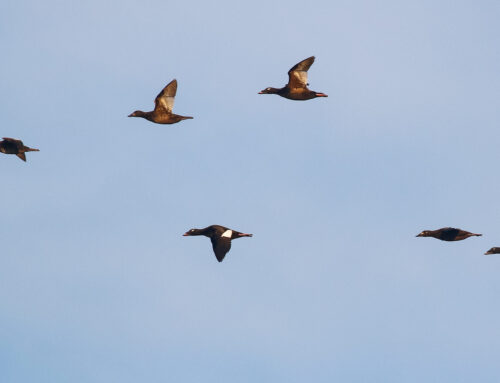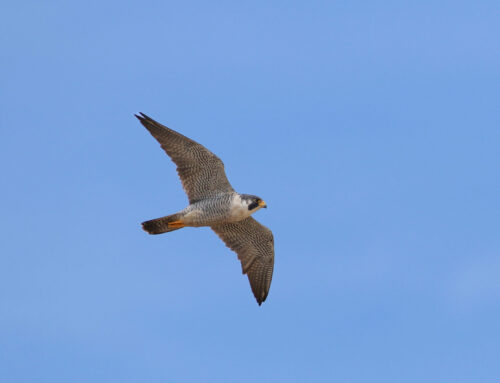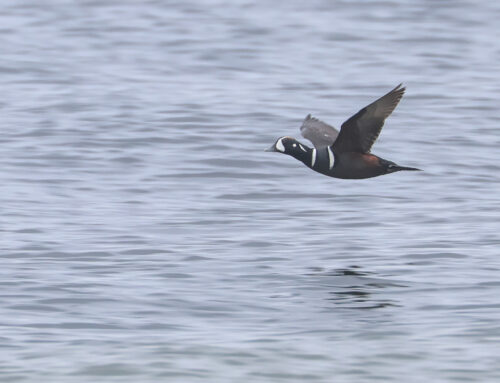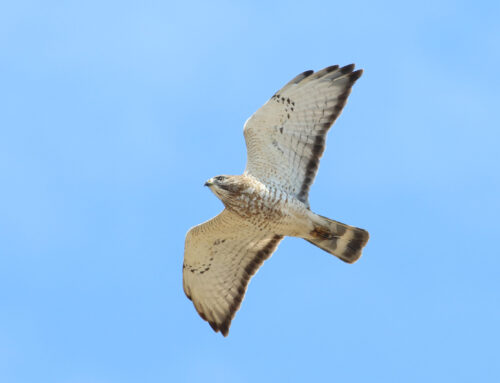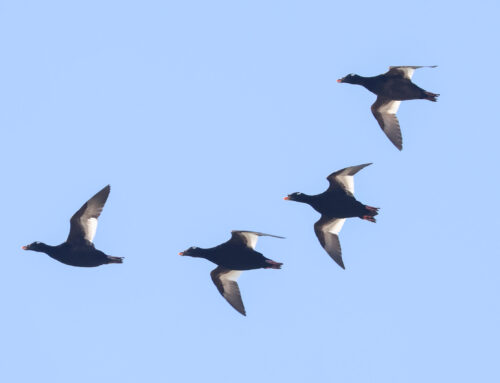The WPBO waterbird count for spring 2017 came to its scheduled end on May 31, though some species are still migrating, such as Red-throated Loons, 11 of which were seen on June 1.
The highlight of the last three days of the official count period was the incredible influx of Canada Geese. There has always been a big push of geese late in the season, but this year’s numbers were unprecedented. After a modest total of 90 on May 28, I and several visitors were shocked on May 29 when long lines of geese suddenly filled the sky from one end to the other beginning about noon. Nothing seemed out of the ordinary when the first goose flocks of the day, totaling 168 birds, flew by at 11:47, but then the floodgates opened and during the hour period from noon to 1:00 p.m. I counted 4215 geese. All were carefully counted one at a time – just kidding – it was hard to keep up with so many flocks, so there was a lot of estimating by tens going on. When the day’s count ended, the Canada Goose total stood at 4807. I returned for about an hour and a half in the evening and counted 299 more.
The flight was not over yet though; on May 30 I counted 1343 Canada Geese, a respectable day total for a normal year. Geese were still moving on May 31, when I counted 466. With so many Canada Geese moving, I kept my eye out for any other species that may have been traveling with them, and did manage to spot individual Greater White-fronted Geese among them on May 29 and 31. This was not too surprising given how many Greater White-fronted Geese showed up throughout the state early this spring; more surprising was the lack of Snow or Ross’s Geese, which also showed up statewide in early spring and are easier to spot in flocks of Canada Geese given their small size and white plumage. While no white geese were seen at the point this season, one of the distant flocks of Canada Geese that flew by during the height of the goose madness on May 29 was led by three swans, too distant to identify to species. These weren’t the first swans of the day: well before the goose flight was underway, three Trumpeter Swans flew by low, directly over our heads at the waterbird shack, an unusual sight at Whitefish Point.
As expected in late May, shorebirds were around in good numbers, with some landing in the pond that has formed between the tip and waterbird shack. Most notable were 132 Whimbrel on May 28, and a good showing on May 31, including a late Lesser Yellowlegs, 68 Semipalmated Sandpipers, and an unusually high daily total of 80 Ruddy Turnstones.
On my final walk back to the parking lot after finishing for the day on May 31, I was greeted by a snazzy Lark Sparrow foraging just off the boardwalk. Later in the afternoon this bird was refound in the same area, an enjoyable sighting for all, and a life bird for some.
Migration slows down during the summer months between the spring and fall waterbird count seasons, but there can still be migrant shorebirds stopping by on the beach, and there is the potential for more local rarities or vagrants, so feel free to visit the point during the off-season if you wish, and please do report your sighting to eBird or to Michigan Audubon.

